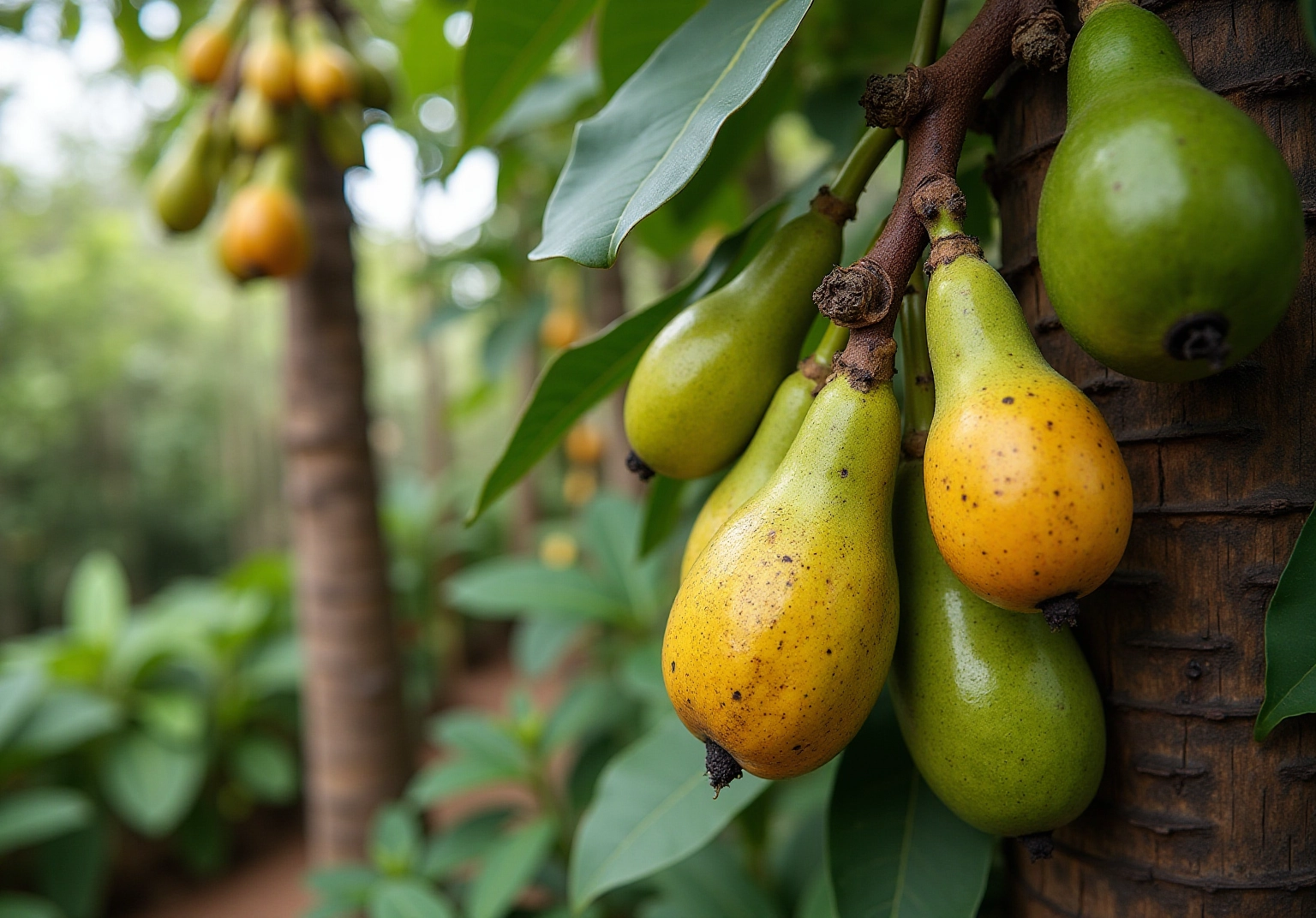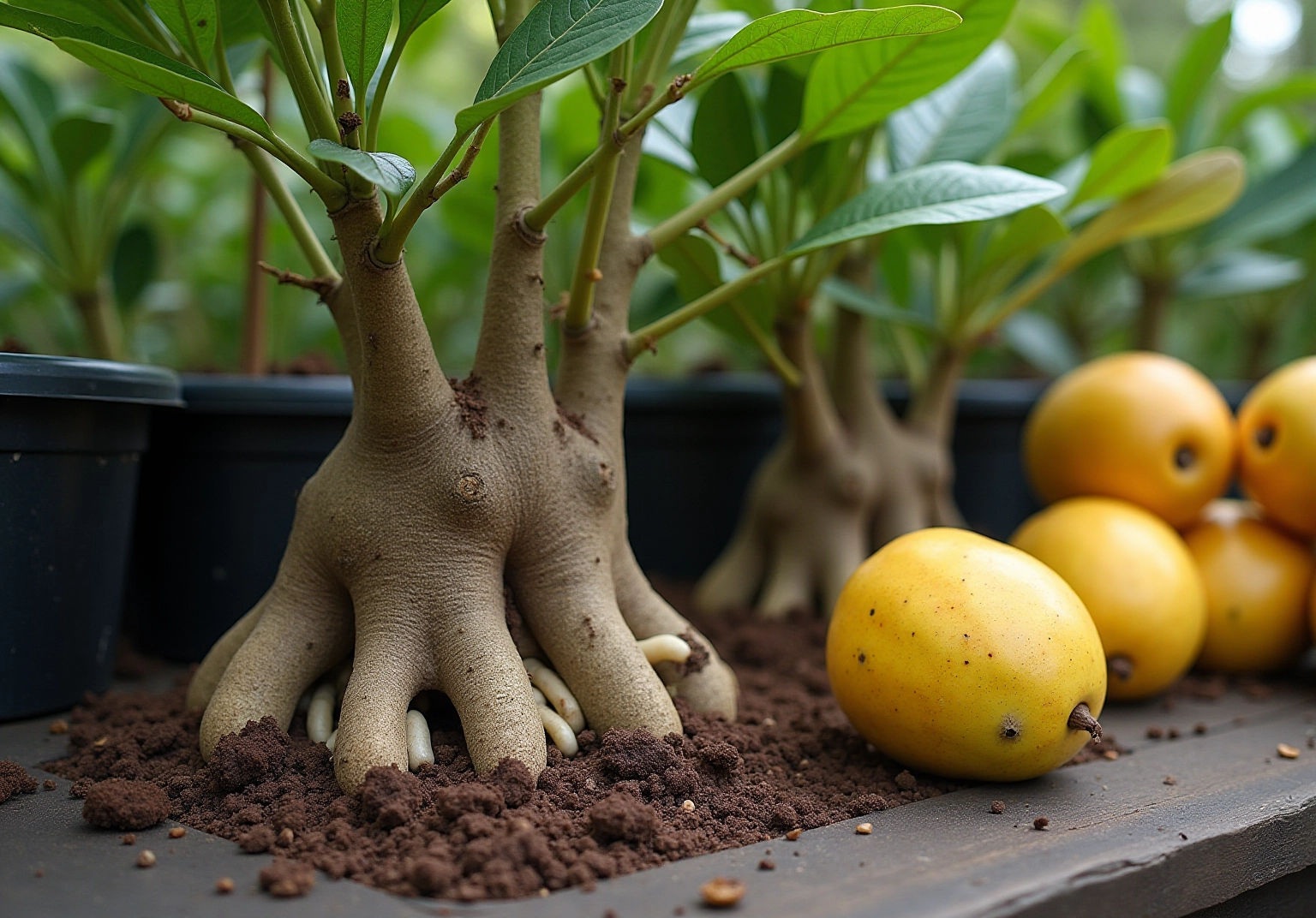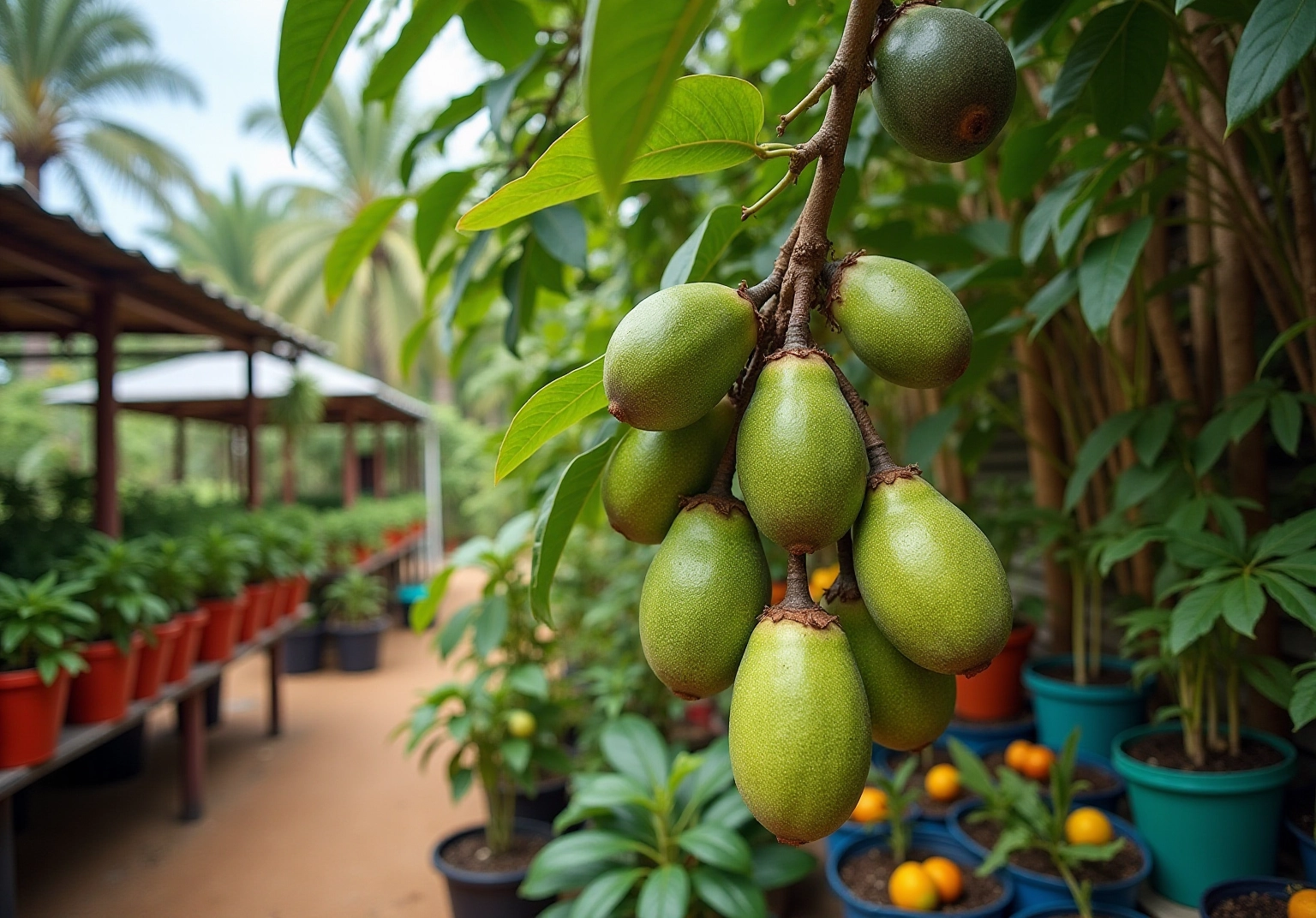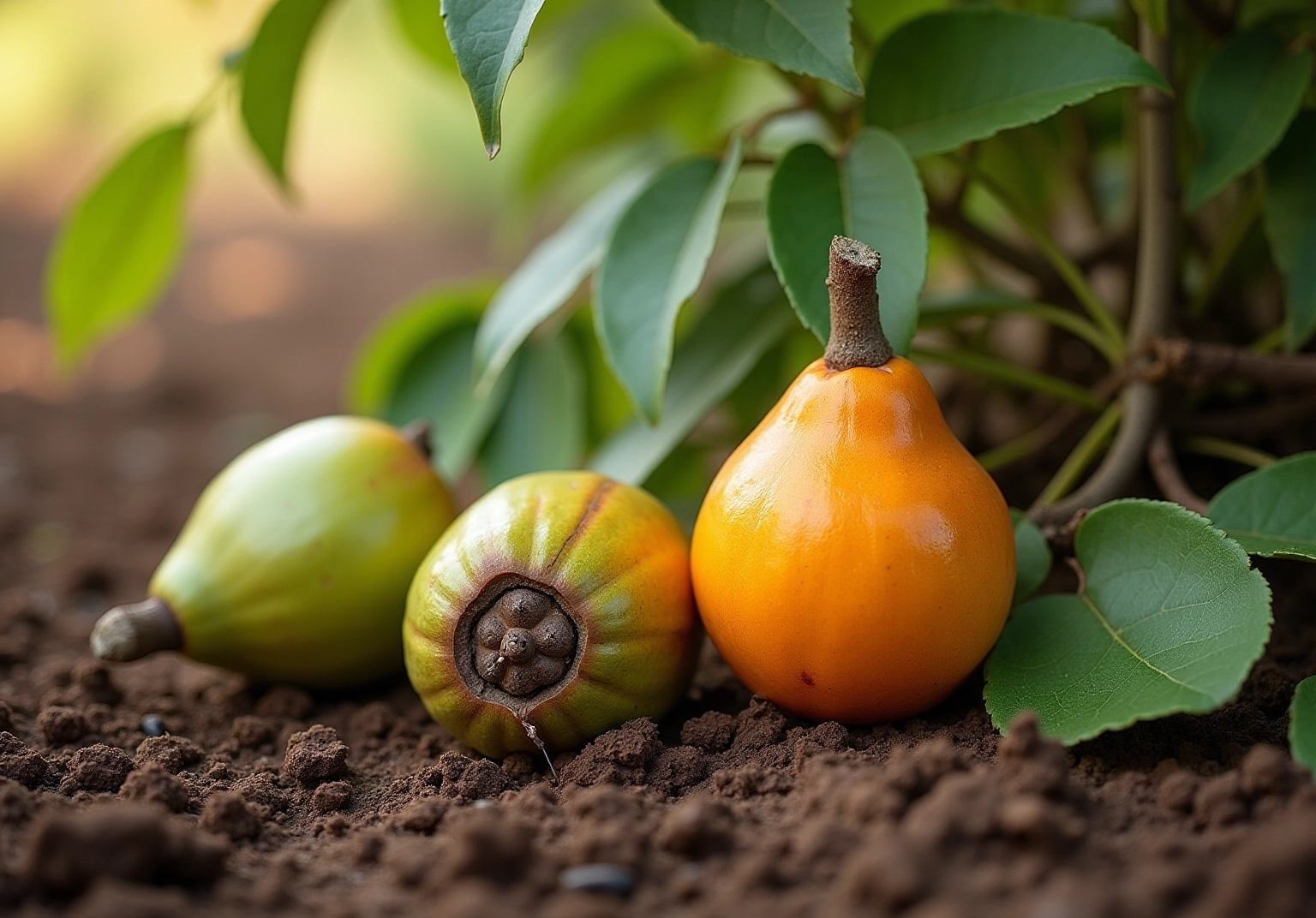
Where Can I Buy Sapote: A Step-by-Step Guide for Home Gardeners
Share
The allure of sapote lies not only in its unique flavors but also in the diverse varieties that can transform any home garden into a tropical paradise. For gardening enthusiasts, understanding the different types of sapote—from the decadent black sapote to the creamy white variety—opens up a world of culinary possibilities and health benefits.
However, the journey to successfully incorporating these fruits into a garden can be fraught with challenges, including:
- Where to buy quality sapote plants
- How to identify reputable vendors
- What to look for to ensure a fruitful purchase
With the right guidance, home gardeners can navigate these hurdles and cultivate a thriving sapote collection that delights the senses.
Understand Sapote Varieties and Characteristics
Sapote comes in several varieties, each with distinct characteristics and benefits, making them ideal choices for home gardeners seeking to enhance their gardens with quick-yield tropical greenery:
-
Black Sapote (Diospyros nigra): Often referred to as the 'chocolate pudding fruit', this variety features a creamy texture and a flavor reminiscent of rich chocolate. Not only is the black fruit delicious, but it is also nutritious, offering antioxidants and essential minerals like potassium and calcium. It thrives in warm climates and can grow up to 30 feet tall, making it a striking addition to any garden.
-
White Sapote (Casimiroa edulis): Known for its custard-like texture and sweet flavor, the white fruit is a favorite among home gardeners. It prefers well-drained soil and full sun exposure, which are crucial for optimal growth. Horticulturists highlight its creamy flesh, which is likened to a blend of banana and peach, making it a delightful treat for fresh consumption or desserts. Utilizing Everglades Farm's professional-grade fertilizers can further enhance its growth and yield.
-
Mamey Sapote (Pouteria sapota): This variety boasts a rich, sweet flavor often used in desserts and smoothies. Mamey trees require a tropical climate and can grow quite large, making them suitable for spacious gardens. Nutritionally, mamey is packed with vitamins, including Vitamin C and B6, contributing to immune health and overall well-being. Its health benefits make it a great choice for health-conscious consumers.
-
Green Sapote (Pouteria viridis): Less common than its counterparts, the green fruit has a sweet, creamy flesh that is perfect for smoothies and desserts. It also prefers warm, tropical conditions and can be a unique addition to your fruit collection.
Understanding these types will assist you in selecting the appropriate fruit for your horticultural and culinary tastes, ensuring a productive and enjoyable gardening experience.

Identify Quality Indicators for Sapote Sources
When determining where can I buy sapote, it is essential to consider several quality indicators to ensure a satisfactory experience.
-
Appearance: Look for vibrant, healthy leaves and a sturdy trunk. Plants exhibiting yellowing leaves or signs of wilting should be avoided, as these can indicate underlying health issues that may affect growth.
-
Root Health: For potted fruit trees, inspect the drainage holes for healthy roots. Healthy roots should appear white and firm, signaling vitality. In contrast, roots that are brown or mushy suggest poor health and may lead to future problems.
-
Fruit Quality: When selecting fresh tropical fruit, opt for items that yield slightly to gentle pressure, indicating ripeness. Avoid any with bruises, dark spots, or a shriveled appearance, as these are signs of deterioration and can affect the quality of your fruit.
When considering vendor reputation, it's essential to ask where can I buy sapote from reputable vendors recognized for their quality plants. Checking customer reviews and ratings can provide valuable insights into the reliability of the source, ensuring you make an informed decision.
By concentrating on these indicators, you can guarantee that your fruit purchase is of the highest quality, setting the stage for a successful gardening experience.

Locate Reputable Vendors for Purchasing Sapote
When considering the purchase of sapote trees, it is essential to explore reputable vendors known for their quality offerings:
Everglades Farm: This online nursery specializes in tropical fruit plants, showcasing a diverse range of species. Customers frequently commend their commitment to quality, with 79% of reviews awarding five stars for their service. The company is acknowledged for providing healthy plants and exceptional customer service, making it a dependable choice for home gardeners. One customer noted that their Mauritius lychee plant arrived in perfect condition, expressing enthusiasm about planting it. Another customer highlighted the meticulous packaging of their coconut cream grafted mango, which arrived in excellent shape, contrasting it with a less favorable experience from another vendor.
👉🏻 Explore Sapote and Mamey Trees collection

Troubleshoot Common Issues When Buying Sapote
When purchasing sapote, several common issues may arise that require attention:
-
Unripe or Overripe Fruit: If you receive fruit that is too hard, allow it to ripen at room temperature. For overripe fruit, consider using it in smoothies or desserts to avoid waste.
-
Damaged Plants: If your fruit tree arrives damaged, promptly contact the vendor for a replacement or refund. Document the damage with photographs to support your claim. Experts emphasize that proper packaging, including moisture barriers, is crucial to prevent damage during shipping.
-
Pest Infestation: Examine your fruit for signs of pests, such as webbing or holes in the leaves. If detected, treat the plant with an appropriate pesticide or neem oil before planting to ensure a healthy start.
-
Poor Growth After Purchase: If your fruit tree struggles to thrive, check that it is planted in well-draining soil and receives sufficient sunlight. Adjust your watering practices to prevent overwatering, which can lead to root rot.
By understanding these potential challenges and knowing how to address them, you can enhance your sapote purchasing experience and also discover where can I buy sapote to cultivate a thriving garden.

Frequently Asked Questions
What are the different varieties of sapote mentioned in the article?
The article mentions four varieties of sapote: Black Sapote, White Fruit, Mamey Sapote, and Green Pouteria.
What is unique about Black Sapote?
Black Sapote, also known as the 'chocolate pudding fruit', has a creamy texture and a flavor similar to chocolate. It is nutritious, offering antioxidants and essential minerals like potassium and calcium, and can grow up to 30 feet tall.
What are the characteristics of White Fruit sapote?
White Fruit sapote has a custard-like texture and sweet flavor, resembling a blend of banana and peach. It thrives in well-drained soil and full sun exposure, and its creamy flesh is ideal for fresh consumption or desserts.
How does Mamey Sapote differ from other varieties?
Mamey Sapote has a rich, sweet flavor often used in desserts and smoothies. It requires a tropical climate, grows large, and is rich in vitamins, including Vitamin C and B6, which contribute to immune health.
What can you tell me about Green Pouteria sapote?
Green Pouteria is less common than other sapote varieties, featuring sweet, creamy flesh that is suitable for smoothies and desserts. It also prefers warm, tropical conditions.
How can understanding sapote varieties benefit home gardeners?
Understanding the different sapote varieties helps gardeners select the appropriate fruit for their horticultural and culinary preferences, enhancing their gardening experience and productivity.

